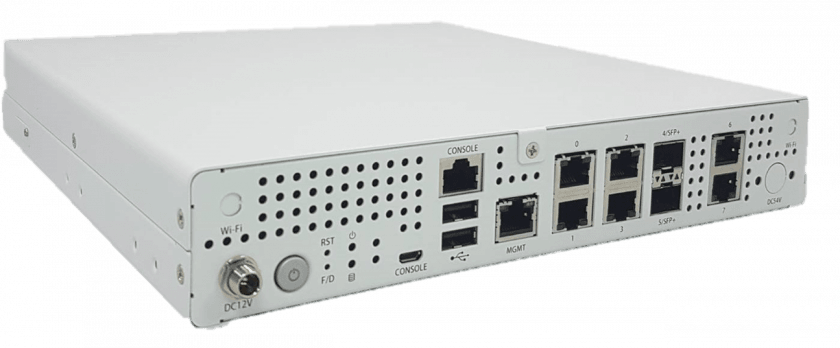Software-Defined WANs Reshape Edge Networks for a 5G World

5G networks will deliver enhanced Mobile Broadband (eMBB) connectivity for consumer use cases, Ultra-Reliable Low-Latency Communications (URLLC) for industrial deployments, and massive Machine-Type Communications (mMTC) for the IoT.
Applications that fall under this broad umbrella include seemingly everything: augmented and virtual reality, real-time translation service, autonomous vehicle networking, and ubiquitous environmental sensing (Figure 1).

And edge networks must be able to support all of these traffic types with the lowest latency and highest throughput possible. In many cases, enterprises looking to support new applications and services enabled by 5G technology also will need to revamp their infrastructure with mobile edge compute (MEC) capabilities.
The Impact of 5G on the Enterprise
Companies like Citrix, for example, demonstrate the opportunities and challenges 5G presents for the modern enterprise.
On one hand, the company provides digital workspace solutions that enable its clients to work collaboratively through virtual online apps and desktop environments. On the other, it offers network infrastructure services such as intelligent traffic management, load balancing, and firewalls to customers in markets such as healthcare, manufacturing, and financial services (Figure 2).

As 5G networks come online, not only will users become less tolerant of latency in workspace solutions, they will also expect additional high-bandwidth features and functionality built into their online collaboration environments. In addition, network service offerings will have to evolve to support the reliability and quality of service (QoS) requirements of numerous 5G-affected industries, customers, and their applications.
Delivering this type of performance means that more intelligence is needed at the edge. But to continue providing software solutions and services in a sustainable, scalable manner, companies like Citrix cannot afford the cost and complexity of leveraging specialized hardware appliances for every single use case and deployment scenario.
Instead, such enterprises are looking to support 5G requirements with software-defined infrastructure such as SD-WAN. (For details, read “SD-WAN and uCPE: Introduction”.)
SD-WAN And uPCE Ramp Up Scalability
Much like software-defined networking (SDN) in the data center, software-defined wide-area networks rely on software-based controllers rather than specialized hardware to route traffic over the network. As a result, engineers can use general-purpose hardware and software to set service-level agreements (SLAs) for different 5G traffic flows.
Just as important for 5G deployments is the fact that SD-WANs can leverage a standard hardware infrastructure. Known as universal customer premise equipment (uCPE), these general-purpose platforms provide multicore network processors, ample storage and memory, sufficient networking ports, and hardware-accelerated security mechanisms, as needed.
But the secret sauce of uCPE is the use of virtualization technologies like Intel® VT, which allows each core on the system to function as an individual network appliance. For example, a quad-core system could allocate two cores to network orchestration and management, a third to a firewall or load balancing, and reserve the fourth for a customer application.
The result is a highly integrated system limited only by the number of available cores, which lowers the total cost of ownership (TCO) of testing, managing, and maintaining multiple hardware appliances.
In addition to the cost savings, what makes this particularly significant for companies like Citrix is that the infrastructure is similar to what is already deployed in data center environments.
uCPE systems have been designed for use on-premises at customer facilities or small branch offices, so it is essentially an architectural shift of intelligence to the edge (Figure 3). This means that more performance is available for 5G networking, applications, and services closer to the action, ensuring highest throughput and lowest latency.

Consistent hardware infrastructure also means massive scalability for software providers across the edge-to-cloud continuum of 5G.
On-ramp to 5G and Mobile Edge Compute
While organizations begin to standardize around uCPE hardware for edge networks, there is still a need for scalability in performance, security, and I/O. To meet these requirements, Intel® and partners like CASwell, Inc. provide a range of uCPE appliance solutions.
For instance, demanding enterprise deployments can leverage the CASwell CAR-3080 networking appliance based on an Intel® Xeon® D2100 processor with as many as 16 cores, 40 Gigabit Ethernet support, and up to 40 Ethernet ports via network modules (Figure 4). As one of the first verified Intel® Select Solutions for uCPE, the CAR-3080 comes pre-qualified to deliver 100 percent line-rate packet processing performance and 100 Gbps encryption for facilities that leverage multiple high-throughput applications or services.

Network operators and service providers that leverage ISS for uCPE solutions such as the CAR-3080 can adopt the technology knowing minimal software integration testing will be required. They are also assured that compatible options will be available as they scale infrastructure to meet networking demands of the future.
On the other end of the spectrum, uCPE solutions based on multicore Intel Atom® C3000 server SoCs provide the right combination of price, power consumption, and fanless performance to meet most entry-level needs for small offices. The CASwell CAD-0263 is one such white box appliance that offers between 4 and 16 cores, Intel® QuickAssist Technology (Intel® QAT), multiple Ethernet ports, and support for LTE and Wi-Fi modules (Figure 5).

5G Infrastructure Enablement for the Enterprise Today
While the first eMBB elements of the 5G specification are just being ratified by the 3GPP, their advantages for existing enterprise applications are already clear. Features such as 1 Gbps data transfer rates and support for higher connection densities, for example, have clear implications for use cases such as video conferencing, virtualized environments, and more.
But new applications and service opportunities are also sure to arise from the capabilities of eMBB, not to mention the groundbreaking determinism and machine-to-machine communications that will come in subsequent parts of the standard. The closer these come to being ratified, the more intense the competition will be to get this infrastructure deployed.
SD-WAN and uCPE provide a path toward that infrastructure today, with flexibility for software vendors and economy for service providers. What’s the use in waiting?